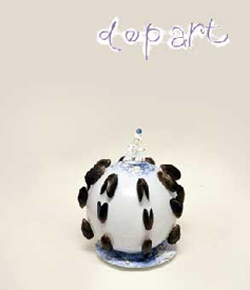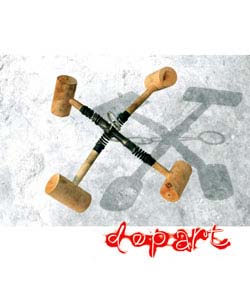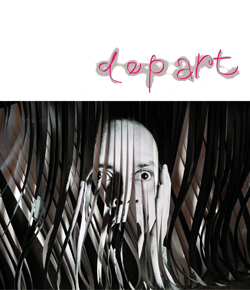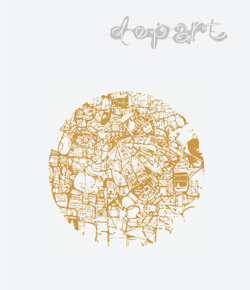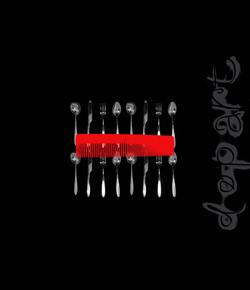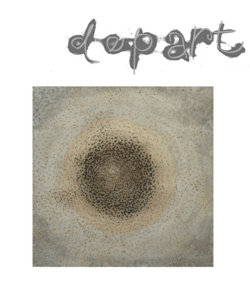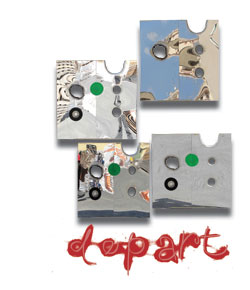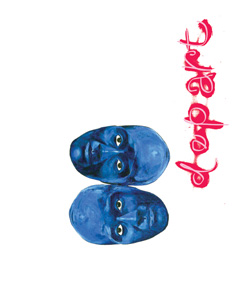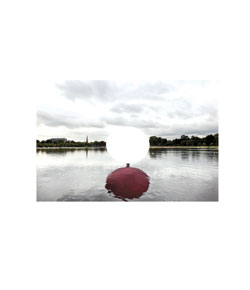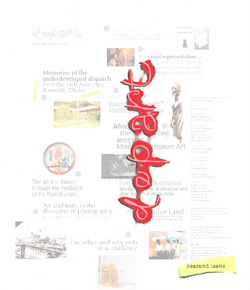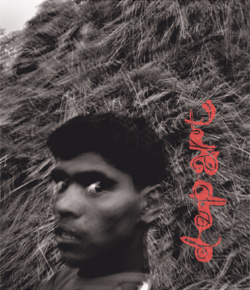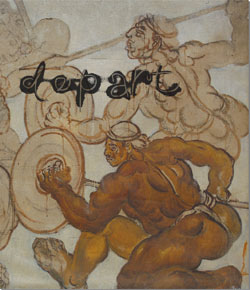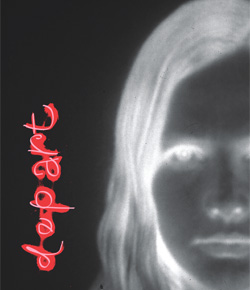Features
Harmonic stasis and dynamic repetition
Understanding the abstract sculptures of Sushen Ghosh

The advent of Modernist abstract art in India occupies a seminal moment concerted around the middle of the 20th century. Between 1960 to 1980 many painters such as V S Gaitonde, Biren De, S H Raza, K C S Panicker, G R Santosh and sculptors like Adi Davierwala, Piloo Pochkhanawalla, Nagji Patel, Dhanraj Bhagat, Sankho Chowdhury, Himmat Shah, Sushen Ghosh among many others were establishing new ways of expression which wrought radical change in the idiom of Indian art. Even figurative artists began exploring abstraction via films for instance Tyeb Mehta's Koodal (reflection on death and existential trauma, 1970) and Akbar Padamsee's Syzygy (explored principals of abstraction through mathematical equations). Only a couple of decades in the past, at the cusp of Indian Independence, artists inspired by tumultuous events of social upheaval had loudly declared themselves as distinctly Modernist in agenda and divorced from more lyrical kind of art being practiced elsewhere. Several artists groups such as

The Calcutta Group (1943), and The Progressive Artists Group, Bombay (1947) had come into existence who 'even though had not followed the exact trajectories in chronological logic of European modern art, had come up with solutions in terms of from, colour, space, figuration etc, which sufficiently had the appearance of a catapulting out from the baggage of Indian–style painting.'1 Yet by the 1960s the influence of the so called Paris aesthetics was giving way to re-contextualised traditional visual language and aesthetics.
This pan Indian movement towards neo-indegenistic abstraction can be traced back to the manifesto of a short lived collective called Group 1890 (named after the house in which the artists met) formed in 1962, Bhavnagar with eleven artists such as Ghulam Sheikh, Raghav Kaneria, Himmat Shah, Jyoti Bhatt etc. These artists came from all over India; led by Jeram Patel they did not advocate any specific mode of art. J Swaminathan, wrote in the manifesto, 'Art is neither conformity to reality nor flight from it; it is reality itself, a whole new world of experience, the threshold for the passage into the state of freedom.’2 They gave emphasis to presence of the 'numen' or essence of internal reality in their work. Geeta Kapur writes, 'The attraction of the eleven-member Group 1890 to material ritual occult signs reissued the modernist enterprise in the coming years. It came to be situated with peculiar aptness in a visual culture of iconic forms still extant in India.’3 Some other noteworthy factors were the first ever non-representational exhibition organised by the artist Ambadas in 1959 in Bombay and the scholarships offered by J D Rockefeller III fund in the sixties and seventies for artists to travel to New York for residencies where they came in contact with American Expressionism. The latter culminated in the exhibition Trends in American Painting, organised by MOMA, which travelled to India in 1967, noted critic Clement Greenberg visited India for its opening.

As abstraction gained purchase various facets of non figurative expression were explored especially those that were visually at par with international trends in abstract art. An amalgam of eastern philosophy and western tenets helped create new trajectories for 'exploring abstract ideas and decontextualised images.’4 Although this period was the focus of a new language, it must be clarified that seeds of abstraction had been sown at the turn of the century in Gaganendranath Tagore's post-cubist paintings, in the 'Contextual Modernism' of Nandalal Bose, Ramkinkar Baij and Benode Behari Mukherjee, and in the revivalist tones of Kala Bhavana's pedagogy with its emphasis on indigenous crafts and design. Indian contemporary sculpture, in particular, owes its beginnings to the unique vision of Ramkinkar, whose negotiations with the traditional and Western produced a language distinctive in style, unconventional in material and 'complex of situational factors.’5 'Ramkinkar Baij ventured to introduce, in a somewhat hazardous manner, a post cubist expressionism and through that means to openly valorize primitive/ peasant/ proletarian bodies, to give them an axial dynamic. He thereby sought to bring through the ruse and reason of indigenous subject-matter a methodological shift in constructing the image.’6 In fact his Lamp stand and Speed are identified as the first modern abstract sculptures in India.


While abstraction as a movement more or less bypassed the Santiniketan School which has been predominantly representational in its schema, it did play a large role in the career of several abstract sculptors such as Sankho Chowdury, Balbir Katt and Sushen Ghosh who all matured under the tutelage of Ramkinkar. Of these, Sushen Ghosh has been closely associated with Kala Bhavana - right after his studentship he joined as a teacher of sculpture (1963 to 2005), later he was the departmental head for more than a decade. Sushen also served as Principal of Kala Bhavana between 2000 and 2002. Sushen's large, minimal sculptures are very much part of the institute's environment. Purity of form, which is the leitmotif of Sushen Ghosh's oeuvre, is the logical outcome of a journey which began in the figurative tradition of his famous teacher.

Hailing from Silchar, when a young Sushen Ghosh received the Assam Government Scholarship in 1959 to study in Santiniketan, the modernist art movement had radiated to other parts of India. Although Nandalal Bose had retired, his towering presence was sanctified in the pedagogy of the institute which still laid claim to Ramkinkar Baij and Benode Behari Mukherjee. At the time Kala Bhavana offered integrated courses which taught different subjects like Painting, Graphics, Functional Arts and Crafts, Mural, Sculptures as well as History of Art that provided a well rounded knowledge of art. An important influence on Sushen was lessons on formal principals of art. Sushen reiterates that 'Nandalal Bose used the term Rhythm specifically; Ramkinkar used the terms Construction, Energy Pattern vigorously. Benode Behari used the terms Tension and Architectonic....by these terms they justified/pointed out the specific direction of their emphasis, we could understand these words from our stand point.’7 These teachers were in fact discussing abstract attributes inherent in art, figurative or otherwise.

Studying in Kala Bhavana has never been an isolated activity; festivals, music, theatre and stage decor, alpona or traditional floor decorations and cultural activities are a constant, silent teacher. Apart from art school, Sushen had several other interests. Musical in nature he played flute, philosophical of bent he was told by Benode Behari to make a study of Upanishads. He also encountered the 'formless' in Tagore's poetry. Having been a student of science he had profound fascination for mathematics and physics. Possibly, all these factors were collectively responsible for a gradual move towards what Sushen terms 'reverse exercise'- negating the superfluous for inner structure; evident in a bronze male figure with arms stretched upwards entitled Elevated (1965). The coil of energy trapped within the musculature is reminiscent of Ramkinkar's Harvester; even though the form is recognisable, the evolution towards abstraction is apparent.
.jpg)
By the time Sushen received the British Council Scholarship in 1969 to Goldsmith College, he had been teaching for six years. His sojourn in England helped gather experience of various materials and for the first time he used ready-mades to create assemblages and kinetic sculptures. The change from rural to urban setting also pushed him to connect the liminal points of accumulated knowledge and arrive at a personal vision, more importantly original works of art in museums and galleries unlocked a world of possibilities. The young sculptor looked for inspiration in the works of influential contemporary British artists such as Kenneth Martin, Mary Martin, Anthony Caro, Victor Pasmore, Anthony Hill and Barbara Hepworth as much as the early abstractionists such as Mondrian, Gabo, Brancusi and Pevsner.
Sushen's year abroad gave him deeper insight into what he had already absorbed in Santiniketan and opened his eyes to the potential of abstraction. One of the first sculptures he made on his return in 1970 was a reworking of the male figure with upstretched arms, Elevated (vertical). Made in plaster, the expressionistic fervour was now replaced with geometric verticality and paring down to the basic form. The smoothened surface too negated animus bringing the structure to forefront. In this period experimentation with fractal arrangements and recurring use of ostinato evokes both notations and numerals. Play of micro-macrocosmic relationships started featuring in his work. In works like Equation (1975), inspired by the innate abstractness of music, numbers, physics and philosophy Sushen started to create mathematically proportioned geometrical motifs arranged in complex principles much like notations. His works take on a melodic turn; repetition is the rhythm and use of space the interlude throbbing with a promise of the next crescendo. To quote Sushen 'Sculpture is Frozen Music.’ It is interesting to note that 1960s was also the beginning of Minimal music which 'utilised repetitive melodic patterns, consonant harmonies, motoric rhythms, and a deliberate striving for aural beauty.’8

In many philosophical systems the use of concentric arrangements functions as revelatory symbols of cosmic truths. Sushen has explored this concept extensively over the years in varied permutations using column like structures radiating from invisible central axis. The inner circle usually contains staggered totems, composed of ovoid units of varying heights stacked upon and swilled away from each other creating an illusion of intra-columnar movement. Usually the outer circles have smaller units giving the impression of evolving shapes; not fully formed, erupting out of the earth as it were. Perhaps these are newer notes - staccato about to disrupt stasis? Composition: 6, 4, 2 in rotation (1998) and Environmental sculpture (Mid 1990's) are examples of this trope.
These sculptures have often been compared to minimalist or constructivist sculptures. There is an apparent relation as far as the use of simple, abstract geometric forms are concerned or in the relationship of the object vis-à-vis viewer and even in the reticence of emotional content. However his sculptures are infused with a primordial force which is comparable to Brancusi's reduction of forms to their inner essence. It is interesting how he connects the different axial movements of units in his work to the canons of posture in traditional Indian sculpture (Bhanga, Sama Bhanga, Tribhanga and Atibhanga). Medial and Lateral movements around the pivot is employed as a systematic method to create dissonance within the greater harmony in Movement and Rest in Space and Spiral movement (a, b).

Even though flux, movement and infinite permutations are basis of these sculptures, they evoke solitude, silence and strange sense of expectation. J J Narzary terms this 'static dynamism' and says, 'Sushen achieved through his series of experiments and modifications a new space-form object.' This interplay with space is evident in an outstanding environmental sculptural project executed in front of Nandan Building, Kala Bhavana. Built between 1973 and 1980, it was conceived as an architectonic sculpture that makes use of both wall type and pillar type elements creating interplay between architecture and surrounding environment. Made up of six modules which cannot be seen in entirety at any given time, it draws influence from Far Eastern scroll paintings and unfolds in real time and space; each module a new chapter in the continuous narration. Spread over roughly fifty metres, its horizontal and vertical components are all of different shapes and sizes and arranged according to specific mathematical ratios right down to the intermediate space of units. The largest component is a wall of roughly fourteen feet in height and width with nine vertical wedges resembling quoins of varying width and depth cut into its eastern face, resulting in an 'accordion pleat' appearance. The pillar element facing the wall not only matches it in height but in the number of notches scooped out from its volume. Of the other units one is a low angular horizontal beam and the rest are smaller truncated versions of the totem. This sculpture possibly comes closest to exemplifying the Birbhum landscape which made a deep and lasting impression when Sushen first arrived here as a student. The undulating countryside sparsely interspersed with palm trees and wide open spaces are all present here - the notched pillar perhaps comparable to local date palm trunk and the pleated wall inspired by Palmyra leaf.

Not unlike historical time keeping monuments, these free standing sculptures create a theatre of shadow, where light becomes a dramatic component of the work. Moreover by removing the base/pedestal from his sculptures Sushen marks them as self referential. 'The sculpture reaches downward to absorb the pedestal into itself and away from actual place and through the representation of its own materials or the process of its construction the sculpture depicts its own autonomy.’9 His in situ sculptures, infused with a self-contained aesthetics, have a sense of unity with their surroundings. Sushen has experimented predominantly with stone, plaster, cast metal, terracotta, iron and the texture/finish of his pieces is usually weathered and organic. A certain sense of playfulness in his smaller works such as Aroha Avaroha (2006) has given him the latitude to experiment with form, colour, rhythm as well as serialism and aleatoric ideas. Simple steel rods in Lines in Space (1975) turn into linear drawings. Most sculptures, whether large scale 'arrangements' or smaller sized works, for instance Silent Notations in Space Terracotta (2006), have a finely tuned presence. 'A very acute sense of proportion makes many of his smaller sculptures attain unexpected monumentality. Monumentality in his sculptures is not about largeness but suggests extension into space or into distance, conveying a sense of infinity. More often than not, seemingly simple geometric forms and calculated arrangement of shapes in space serve this idea.’10 A similar geometric preoccupation is the core of his austere linear drawings which often make use of mathematical models such as the Golden Section and Fibonacci Series to create balance and sequential movement.
Unfettered by visual antecedents in Indian sculptural context, Sushen has always marched to his own drum. His oeuvre focuses on capturing the fundamental nature of things and charts an organic growth that persuades with its internal logic. His geometric style, simplicity, directness and modularity have a universal appeal while being rooted in its locus, thus lending itself to complex reifications. Sushen Ghosh's work exhibits the ideas of his era; however he was able to blend the diversity of Modernism into a praxis which is individual and evocative and firmly asserts his place and contribution as a Modernist Indian sculptor of significance.
Reference
- The Calcutta Group 1943-1953, Sanjoy Mallik, Art & Deal. No 16, Volume 3no.2, October- December 2004.
- Excerpt from the catalogue of Group 1890 exhibition/ 1963/criticalcollective.in
- Geeta Kapur/When was Modernism in Indian Art/ Modernism a brief account/ pg 307
- Indian Modernist Art Exhibition Series/ Rubin Museum of Art/2012.
- K.G. Subramanyan/The Living Tradition/ Perspectives on Modern Indian Art / Kolkata: Seagull Books/1987:9
- Geeta Kapur/When was Modernism/ Indian Modernism a brief account/ Pg 303
- Sushen Ghosh/ unpublished statement/2016/pg 12
- “It is interesting to note that 1960's was the beginning of Minimal music which is associated with diatonic tonality, phrase repetition, additive process, and duration as exemplified in the music of Philip Glass and Steve Reich which drew sponsorship from art galleries and museums, presented in conjunction with visual-art minimalists like Robert Morris (in Glass's case), and Richard Serra, Bruce Nauman... and utilised repetitive melodic patterns, consonant harmonies, motoric rhythms, and a deliberate striving for aural beauty....Glass was in turn influenced by Ravi Shankar and Indian music.”/ https://en.wikipedia.org/wiki/Minimal_music
- Rosalind Krauss/Sculpture in the Expanded Field/ J Stor/October, Vol. 8. (Spring, 1979), pp. 30-44.
- Soumik Nandi Majumdar/Notations and Rhythm in Space: Sushen Ghosh/artnewsnviews.com
USHMITA SAHU is an artist, writer and Independent curator based in Santiniketan, West Bengal, India.




